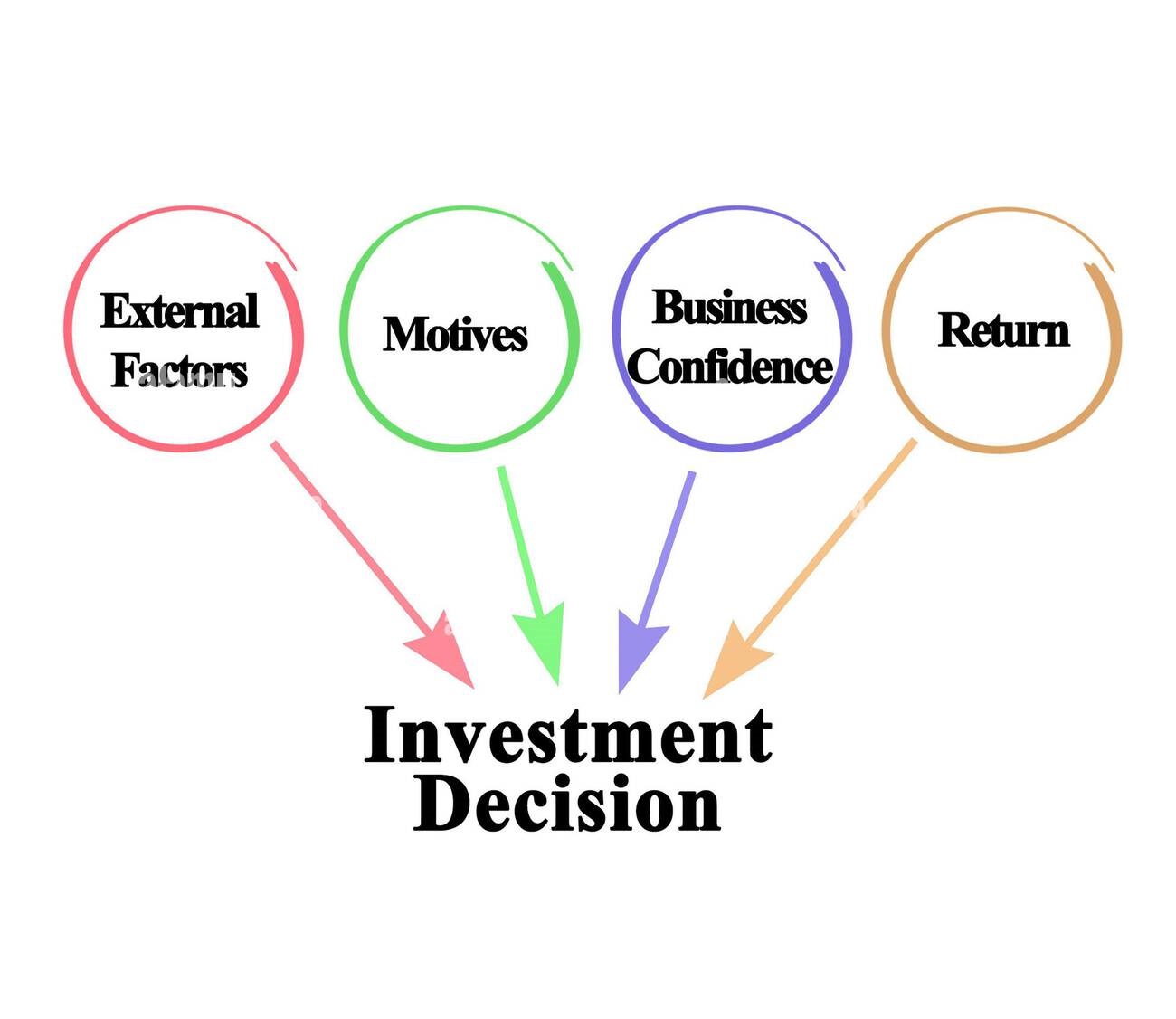Introduction
Investing is a key component of building wealth and achieving financial independence. Whether you’re saving for retirement, buying a house, or simply looking to grow your money, understanding the factors that characterize investments is crucial for making informed decisions.
Investments can be analyzed and evaluated based on multiple factors. Each of these factors plays a significant role in determining the suitability and potential of an investment opportunity. By understanding these factors, individuals can make well-informed investment decisions that align with their financial goals and risk tolerance.
In this article, we will explore the four key factors that characterize investments. These factors are:
- Risk
- Return
- Liquidity
- Time Horizon
Understanding these factors and considering them when investing allows individuals to tailor their investment strategies and portfolios to their unique needs and objectives. So, let’s dive into each of these factors in more detail.
Factor 1: Risk
Risk is an inherent part of investing and refers to the potential for loss or volatility in the value of an investment. Investors must understand and assess the level of risk associated with an investment before making any decisions.
There are different types of investment risks, including market risk, credit risk, inflation risk, and liquidity risk. Market risk is the possibility of losing money due to fluctuations in the overall market conditions. Credit risk relates to the risk of the issuer defaulting on interest or principal payments. Inflation risk occurs when the purchasing power of money decreases over time. Liquidity risk refers to the possibility of not being able to sell an investment quickly without incurring significant losses.
Investors have varying risk tolerances – some are willing to take on higher levels of risk in pursuit of potentially higher returns, while others prefer safer investments with lower risk. Balancing risk and return is a crucial aspect of building a well-diversified investment portfolio.
When considering risk, it’s important to also evaluate the investment’s historical performance, its correlation with other investments in the portfolio, and the potential for diversification. Diversification is a risk management strategy that involves spreading investments across different asset classes, sectors, and geographic regions. By diversifying their portfolio, investors can reduce their exposure to any one investment and mitigate the impact of a potential loss.
Understanding risk requires careful analysis and research. Investors should assess their risk tolerance, financial goals, and time horizon to determine the level of risk they are comfortable with. It’s advisable to seek guidance from financial professionals or consult with an investment advisor to make informed decisions aligned with their risk tolerance and investment objectives.
Factor 2: Return
Return is a fundamental factor in investing and refers to the potential profit or gain that an investment can generate over a specific period of time. It is the reward investors receive for taking on the risk associated with a particular investment.
The return on investments can come in various forms, such as capital appreciation, dividends, interest payments, or rental income. The potential return of an investment is influenced by several factors, including market conditions, economic trends, and the performance of the underlying assets.
Investors seek investments that offer a favorable risk-return tradeoff. Generally, higher-risk investments have the potential for higher returns, while lower-risk investments provide more modest returns. It’s crucial for investors to carefully assess the potential returns of an investment, taking into account their financial goals, risk tolerance, and time horizon.
When evaluating returns, investors should also consider the concept of compound interest. Compound interest allows investors to earn interest not only on their initial investment but also on the accumulated interest over time. This compounding effect can significantly enhance the overall return on an investment, especially over long periods.
It’s important to note that past performance is not a guarantee of future returns. Investors should conduct thorough research and consider the historical performance, volatility, and other relevant factors when assessing the potential returns of an investment.
Diversification also plays a role in optimizing returns. By spreading investments across different asset classes, sectors, and geographies, investors can potentially benefit from the performance of multiple areas while mitigating the impact of underperforming investments. Diversification enables investors to capture a broader range of return opportunities while managing risk.
Ultimately, understanding the potential return of an investment is integral to building a well-balanced and diversified portfolio that aligns with an investor’s financial goals and risk tolerance. It’s wise to seek professional advice and conduct thorough research before making any investment decisions to increase the chances of achieving desired returns.
Factor 3: Liquidity
Liquidity is an essential factor to consider when evaluating investments. It refers to how quickly and easily an investment can be converted into cash without incurring a significant loss in value. In simple terms, liquidity measures the ease of buying or selling an investment.
Investments with high liquidity can be easily bought or sold in the market with minimal impact on their prices. Examples of highly liquid investments include stocks, government bonds, and actively traded exchange-traded funds (ETFs). On the other hand, investments with low liquidity, such as real estate or private equity, may take longer to sell or require finding a suitable buyer.
The level of liquidity desired in an investment can depend on an investor’s financial needs and the time horizon they have. If an investor anticipates needing quick access to funds, such as for emergencies or short-term expenses, they would prioritize investments with higher liquidity. However, for long-term investors with a more extended time horizon, investments with lower liquidity may still be suitable.
It’s important to note that higher liquidity usually comes with lower potential returns. Investments that offer higher liquidity often have lower yield potential compared to less liquid investments. This trade-off between liquidity and potential return should be carefully considered when making investment decisions.
Additionally, market conditions and investor sentiment can impact the liquidity of investments. During periods of market turmoil or economic uncertainty, liquidity can quickly dry up as buyers and sellers become more cautious. This can potentially result in wider bid-ask spreads and limited access to liquidity.
Investors should assess their liquidity needs and consider their ability to hold onto an investment for an extended period. It’s advisable to maintain a balanced portfolio that includes both liquid and less liquid investments, ensuring sufficient liquidity to meet short-term needs while also allowing for potential long-term growth.
Understanding the liquidity of investments is crucial for maintaining flexibility and being prepared for unexpected financial needs. By incorporating liquid investments into their portfolios, investors can ensure they have the ability to access cash when necessary while maintaining a solid foundation for long-term financial growth.
Factor 4: Time Horizon
Time horizon is a critical factor to consider when making investment decisions. It refers to the length of time an investor plans to hold an investment before needing to access the funds. The time horizon is closely linked to an investor’s financial goals and can significantly impact the choice of investments.
Short-term investments typically have a time horizon of one to three years and are suitable for investors who need access to their funds relatively quickly. These investments generally prioritize stability and liquidity over high returns. Examples of short-term investments include savings accounts, money market funds, and short-term bonds.
Intermediate-term investments generally have a time horizon ranging from three to ten years. These investments strike a balance between stability and potential returns. They can include a mix of stocks, bonds, and real estate investment trusts (REITs).
Long-term investments are held for periods exceeding ten years and are suitable for investors with a longer time horizon and a greater tolerance for risk. These investments typically prioritize growth and have the potential for higher returns. Examples of long-term investments include stocks, mutual funds, and real estate properties.
Matching the investment time horizon with financial goals is crucial. For example, if an investor is saving for retirement, which is generally a long-term goal, long-term investments with growth potential may be more appropriate. On the other hand, if an investor is saving for a short-term goal, such as a down payment on a house, short-term investments with lower risk and immediate liquidity are advantageous.
Investors with different time horizons may also have different risk tolerances. Generally, longer time horizons allow investors to take on more risk since there is more time to recover from potential losses. However, it’s important to strike a balance between risk and potential returns to align with individual risk tolerance and financial objectives.
Monitoring and regularly reviewing an investment portfolio with respect to the time horizon is crucial. As the time horizon approaches, investors may need to adjust their portfolio to reduce risk and increase the stability of returns. This can involve gradually shifting investments from higher-risk, high-return assets to lower-risk, more stable assets.
Understanding the time horizon of investment goals allows investors to tailor their investment strategies accordingly. It enables them to select investments that align with their expected timeline and helps ensure that they are on track to achieve their financial objectives.
Conclusion
Investments are characterized by four key factors: risk, return, liquidity, and time horizon. Understanding these factors is vital for making informed investment decisions that align with individual financial goals and risk tolerance.
Risk is an inherent part of investing and refers to the potential for loss or volatility. Investors must assess the level of risk associated with an investment and diversify their portfolios accordingly.
Return measures the potential profit or gain an investment can generate over a specific period. Investors should evaluate the potential returns of an investment, considering their financial goals, risk tolerance, and time horizon. It’s important to remember that past performance is not indicative of future returns.
Liquidity measures the ease of buying or selling an investment. Higher liquidity provides quicker access to funds but may come with lower potential returns. Evaluating liquidity needs and maintaining a balanced portfolio of liquid and less liquid investments is crucial.
Time horizon refers to the length of time an investor plans to hold an investment. Aligning the investment time horizon with financial goals and risk tolerance allows for appropriate investment choices that prioritize stability, growth, or a combination of both.
Each of these factors plays a crucial role in determining the suitability and potential of an investment opportunity. Investors should analyze and consider these factors, conduct thorough research, and seek professional advice when needed to make well-informed investment decisions.
By understanding the factors that characterize investments, individuals can build well-balanced portfolios that reflect their financial goals, risk tolerance, and time horizon. Regularly reviewing and adjusting the portfolio as market conditions and personal circumstances change is essential to maintain alignment and optimize investment outcomes.
Investing is a journey that requires ongoing learning and adaptability. By considering the four factors of risk, return, liquidity, and time horizon, investors can navigate the complex world of investments with confidence and set themselves on a path towards financial success.

























